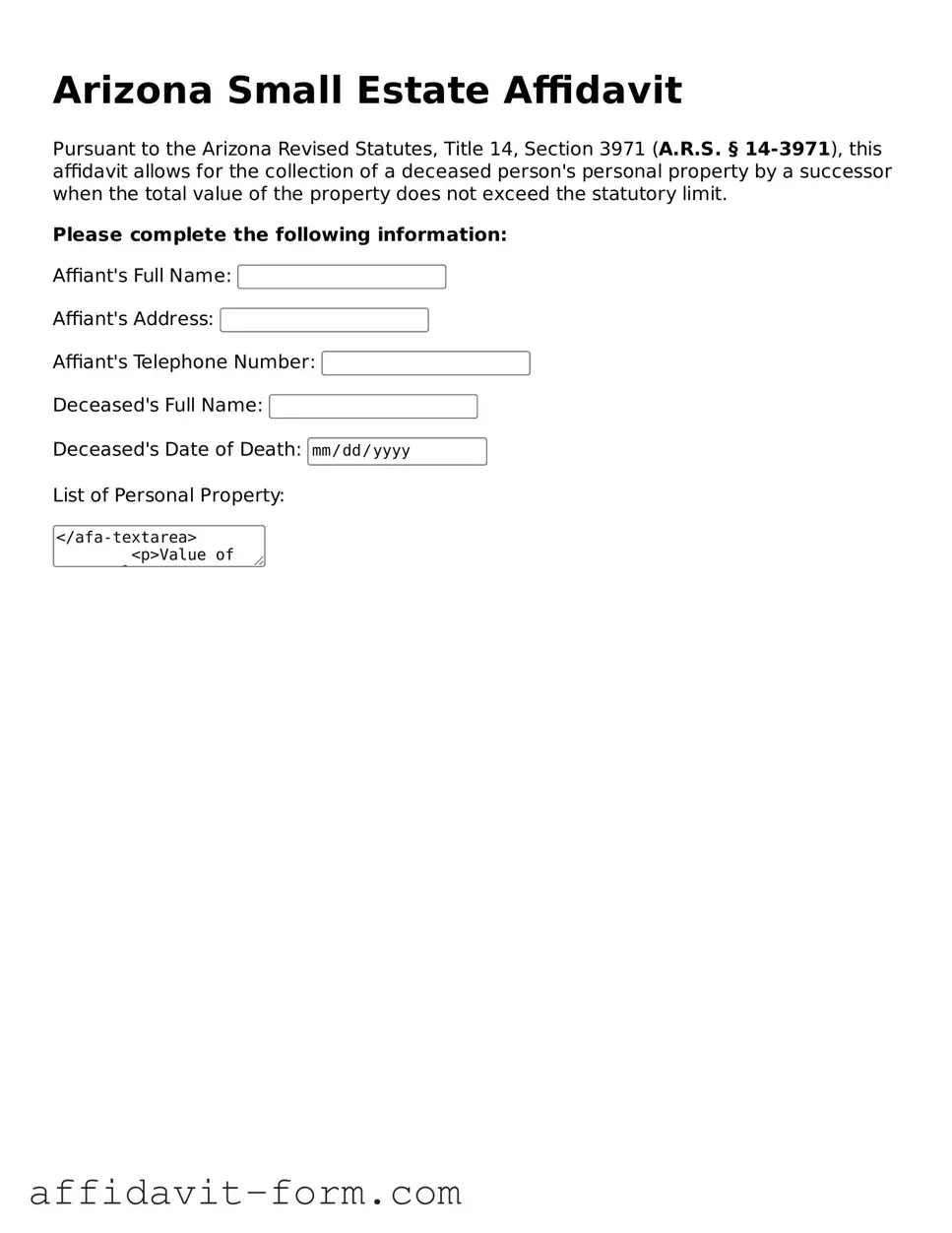What is a Small Estate Affidavit in Arizona?
A Small Estate Affidavit is a legal document used in Arizona to manage the assets of a deceased person (the decedent) without formal probate when the total value of the estate does not exceed certain thresholds. This form facilitates the transfer of the decedent's assets to their rightful heirs or beneficiaries.
Who can use the Small Estate Affidavit?
The Small Estate Affidavit can be used by successors or legally recognized heirs of the deceased, including spouses, children, or other relatives, as well as individuals who are named as beneficiaries in the will, if applicable. The person using the affidavit asserts their legal right to collect the property of the decedent.
What are the value thresholds for using a Small Estate Affidavit in Arizona?
As of the last update, in Arizona, the value thresholds for utilizing a Small Estate Affidavit are as follows:
-
For personal property (e.g., bank accounts, stocks, and vehicles), the total value must not exceed $75,000.
-
For real estate, the gross value of the deceased's real property in Arizona must not exceed $100,000.
What documents are needed to fill out a Small Estate Affidavit in Arizona?
To complete a Small Estate Affidavit in Arizona, several pieces of information and documents are necessary, including:
-
A certified copy of the death certificate of the decedent.
-
Documentation asserting the value of personal and real property.
-
Evidence of the relationship to the decedent or a copy of the will, if applicable.
-
Identification documents to prove your identity.
These requirements ensure the accurate and rightful transfer of the decedent's assets.
How is real estate handled with a Small Estate Affidavit in Arizona?
In Arizona, to transfer real estate using a Small Estate Affidavit, the affidavit must be recorded in the county where the property is located. This process involves drafting a separate affidavit that specifically addresses the real property, adhering to the state's value threshold. The informed affidavit aids in legally transferring the property title to the rightful heirs or beneficiaries.
Is there a waiting period for filing a Small Estate Affidavit in Arizona?
Yes, in Arizona, there is a mandatory waiting period of 30 days after the death of the decedent before a Small Estate Affidavit can be filed. This waiting period allows time for all claims against the estate to be presented.
Can debts of the decedent be paid using a Small Estate Affidavit?
While the Small Estate Affidavit in Arizona is primarily used to collect the decedent's assets, it is also permissible for the affidavit to address outstanding debts. The person filing the affidavit may use the assets collected to pay the decedent’s debts, in accordance with state law, ensuring debts are addressed before distribution to heirs or beneficiaries.
What happens after the Small Estate Affidavit is filed in Arizona?
After the Small Estate Affidavit is filed, the affidavit serves as legal authority for the person filing to collect the assets listed in the document. Financial institutions, such as banks, and other entities holding the decedent's property, will release the assets upon presentation of the affidavit, allowing for the distribution of the assets to the rightful heirs or beneficiaries.
Can a Small Estate Affidavit be contested?
Yes, like most legal procedures involving the distribution of a decedent's assets, a Small Estate Affidavit can be contested. If an individual believes the affidavit was filed erroneously or fraudulently, they have the right to challenge it in court. Legal advice may be necessary to navigate these challenges.
The Small Estate Affidavit form for Arizona can typically be found through the Arizona Judicial Branch's website or obtained from a county court's office. Ensure that the most current form is used and that all state-specific guidelines are followed for filing.
